Back Yard Geology: Crinoid Stems
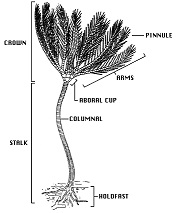 Crinoids are often called “sea lilies” because of their resemblance to an underwater flower. Crinoids were not plants, however; crinoids were animals. Madeleine L’Engle wrote about farandolae in A Wind in the Door, and her character Sporos and his fellows were meant to resemble crinoids. Literature and science!
Crinoids are often called “sea lilies” because of their resemblance to an underwater flower. Crinoids were not plants, however; crinoids were animals. Madeleine L’Engle wrote about farandolae in A Wind in the Door, and her character Sporos and his fellows were meant to resemble crinoids. Literature and science!
There are still some types of crinoids, but it’s the extinct crinoids that 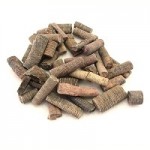 we’ll be talking about here. If you live in the Midwest, you already know what part of an ancient crinoid looked like because you probably had a pile of crinoid stems
we’ll be talking about here. If you live in the Midwest, you already know what part of an ancient crinoid looked like because you probably had a pile of crinoid stems  somewhere in your bedroom, and a necklace of threaded crinoid “coins” around your neck in the summertime. (If you ever hear of or see a necklace or rosary threaded with St. Cuthbert’s beads, you’re looking at crinoids!) (Sometimes crinoid stems and coins are called Indian Beads, but that’s very misleading, even though some Native Americans did use crinoid stems and coins to make jewelry.)
somewhere in your bedroom, and a necklace of threaded crinoid “coins” around your neck in the summertime. (If you ever hear of or see a necklace or rosary threaded with St. Cuthbert’s beads, you’re looking at crinoids!) (Sometimes crinoid stems and coins are called Indian Beads, but that’s very misleading, even though some Native Americans did use crinoid stems and coins to make jewelry.)
If you have access to a lapidary (rock tumbler), crinoids shine up beautifully! They can be painted, too!
Don’t forget that there are still crinoids in the ocean; they’re echinoderms, like starfish and sea urchins.
The ancient, now-extinct crinoids are seldom found as an intact fossil 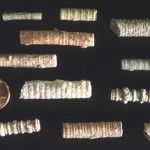 – the arms were too fragile and the pieces were scattered by ocean currents. But the stalk, or stem, can be found, fossilized, all over the Midwest. In fact, it’s the state fossil of Missouri!
– the arms were too fragile and the pieces were scattered by ocean currents. But the stalk, or stem, can be found, fossilized, all over the Midwest. In fact, it’s the state fossil of Missouri!
The next time you’re walking by a creek or stream, take off your shoes and wade right in there. You’ll probably feel the crinoid stems under your feet. Start a collection. If you look really closely, you might even find a fossil imprint of an intact crinoid!
You might also find geodes and arrowheads and caddis shells, but that’s another post.
Take a walk outside. Look around at all the stone. Imagine what the land where you are standing might have looked like a million years ago. Everything you see today is here now because of what was there then.
 Jane Goodwin is a professor of expository writing at Ivy Tech Community College, a hands-on science teacher for College for Kids, a professional speaker and writer, and a social media liaison for Steve Spangler Science. She wanted to be a ballerina and an astronaut, but gravity got the better of her.
Jane Goodwin is a professor of expository writing at Ivy Tech Community College, a hands-on science teacher for College for Kids, a professional speaker and writer, and a social media liaison for Steve Spangler Science. She wanted to be a ballerina and an astronaut, but gravity got the better of her.
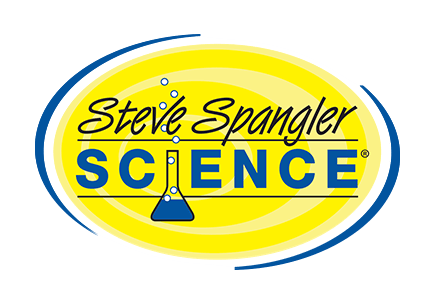


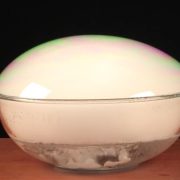

Thank you Dr. Goodwin! Hunting for crinoids is cathartic. You’re description was lovely. I have a favorite spot where you can scoop them up by the handful. Keep up the good work. Cheers!